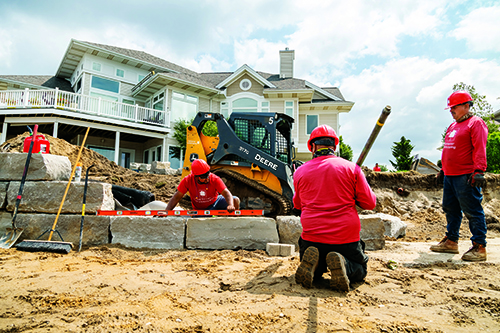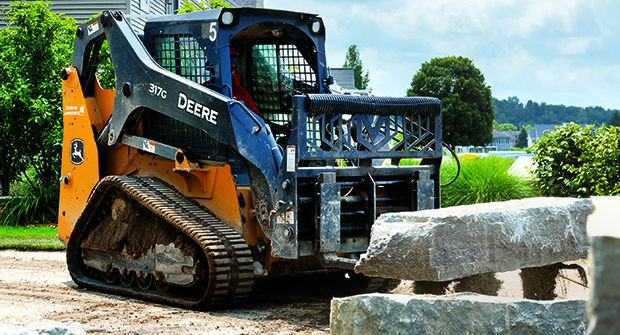
Flexibility vs. power
Users say smaller machines have a lot of bonuses — lower starting prices, greater maneuverability, weights that allow them to tow units to jobs with standard pickups instead of having to hire people with a commercial driver’s license. However, there are tradeoffs.
Smaller machines have smaller engines, less available power for hydraulics and attachments, tend to be slower and can be more expensive to maintain.
Taussig says he loves his minis, but maintenance time and costs are his No. 1 complaint.
“The smaller wear out a lot faster than the big machines. That’s the big technology that we’re missing out on right now,” Taussig says. “After 2,000 hours on my (large) skid loader, it’s barely time for a maintenance check. At 2,000 hours on some of the mini skid-steers, that’s when it’s time to retire them.”
The compact sizes that make these machines so useful also mean tight spaces for hydraulic lines and other components, he adds, saying he’s had to replace hydraulic lines on several mini skid-steers because they rub against other components.
Vugteveen has similar complaints, noting that higher maintenance costs are almost baked into smaller gear. Smaller tools equal smaller components, making each part more susceptible to damage from daily use — anything from hitting a big rock when grading a space for a new patio to minor collisions when loading machines on trailers.
At Deere, which does not offer any equipment smaller than a compact track loader although its closely watching the mini market, Gribble says maintenance costs and power needs tend to bring people from small machines to bigger tools.
“Contractors can’t find enough help, they can’t bid on jobs fast enough. They’re just go, go, go all the time,” Gribble says. “Compact and mini equipment can let them bid on some of those jobs, but at some point, you have to balance flexibility with productivity. Customers are asking us to go to the limit. ‘How much capability can we get out of this machine?’ There is a limit.”


